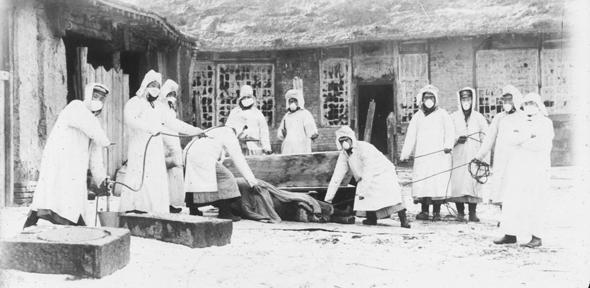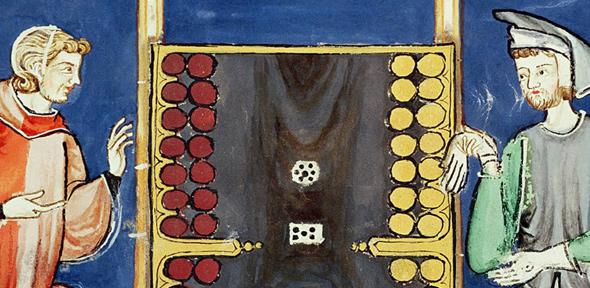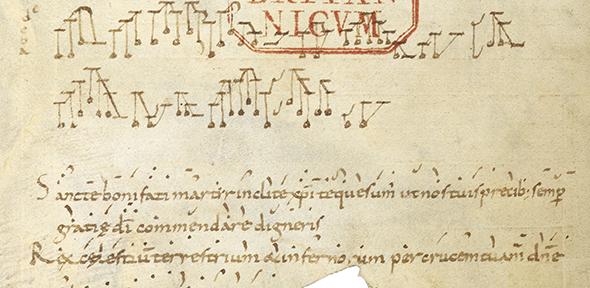
An international research team has provided overwhelming evidence that the skeleton discovered under a car park in Leicester indeed represents the remains of King Richard III - closing what is probably the oldest forensic case solved to date.
Analysis of all the available evidence confirms identity of King Richard III to the point of 99.999% (at its most conservative).
The team of researchers, including geneticist Dr Peter Forster from Murray Edwards College and the McDonald Institute for Archaeological Research, and led by Cambridge graduate Dr Turi King have published their findings online today in the journal Nature Communications.
The researchers collected DNA from living relatives of Richard III and analysed several genetic markers, including the complete mitochondrial genomes, inherited through the maternal line, and Y-chromosomal markers, inherited through the paternal line, from both the skeletal remains and the living relatives.
While the Y-chromosomal markers differ, the mitochondrial genome shows a genetic match between the skeleton and the maternal line relatives. The former result is not unsurprising as the chances for a false-paternity event is fairly high after so many generations.
Forster said: “Although the false paternity means we cannot look forward in time, we can trace King Richard’s Y lineage back into prehistory. Historically, the male line of the Plantagenets is recorded back until AD1028 in N France. Using King Richard’s genetic profile, we can go back much further: Richard’s G2a type traces back to the first farmers who migrated from the Near East and Anatolia (modern Turkey) to Europe about 8000 years ago, quickly spreading along the Mediterranean and into Central Europe and France by 5500BC.
"These pioneer farmers carried predominantly G2a types, which today are quite rare, around 1 percent in Europe (see map). And one of these Anatolian farmers was King Richard’s immigrant male ancestor. Incidentally, the descendants of the Plantagenets not only became Kings of England but also of Jerusalem, bringing the migration of this Y chromosome type full circle.”
![]()
Map shows locations of 14 living men who are close genetic matches to King Richard –their G2a type is quite rare, around 1 percent in Europe today.
Analysis of the mitochondrial DNA shows a match between Richard III and modern female-line relatives Michael Ibsen and Wendy Duldig. The male line of descent is broken at one or more points in the line between Richard III and living male-line relatives descended from Henry Somerset, 5th Duke of Beaufort.
This paper is also the first to carry out a statistical analysis of all the evidence together to prove beyond reasonable doubt that Skeleton 1 from the Greyfriars site in Leicester is indeed the remains of King Richard III.
The researchers also used genetic markers to determine hair and eye colour of Richard III and found that with probably blond hair - at least during childhood - and almost certainly blue eyes, Richard III looked most similar to his depiction in one of the earliest portraits of him that survived, that in the Society of Antiquaries in London.
“Our paper covers all the genetic and genealogical analysis involved in the identification of the remains of Skeleton 1 from the Greyfriars site in Leicester and is the first to draw together all the strands of evidence to come to a conclusion about the identity of those remains,” said Dr Turi King from the University of Leicester, who lead the research.
“Even with our highly conservative analysis, the evidence is overwhelming that these are indeed the remains of King Richard III, thereby closing an over 500 year old missing person’s case.”
Historically, the male line of the Plantagenets is recorded until Hugues, Count of Perche (documented AD1028 in N France).
Prehistorically, Richard’s male ancestor, carrying a G2a-type, arrived with the first farmers from the Near East and Anatolia (modern Turkey) to Europe about 8000 years ago, quickly spreading along the Mediterranean and into Central Europe and France by 5500BC.
The research team now plans to sequence the complete genome of Richard III to learn more about the last English king to die in battle.
Adapted from a University of Leicester press release.
DNA and genealogical study confirms identity of remains found in Leicester and uncovers new truths about his appearance and Plantagenet lineage.
The text in this work is licensed under a Creative Commons Licence. If you use this content on your site please link back to this page. For image rights, please see the credits associated with each individual image.




































